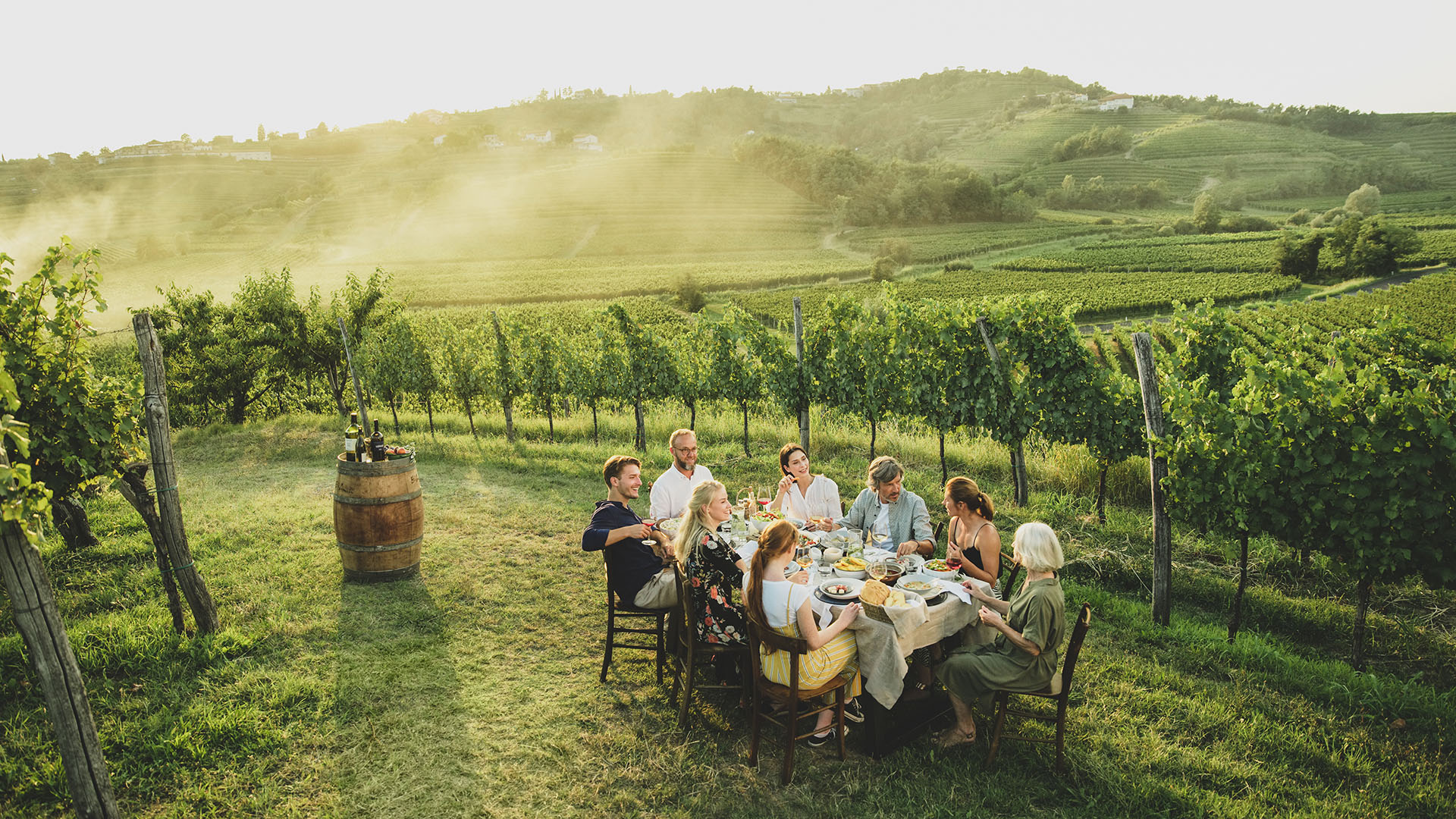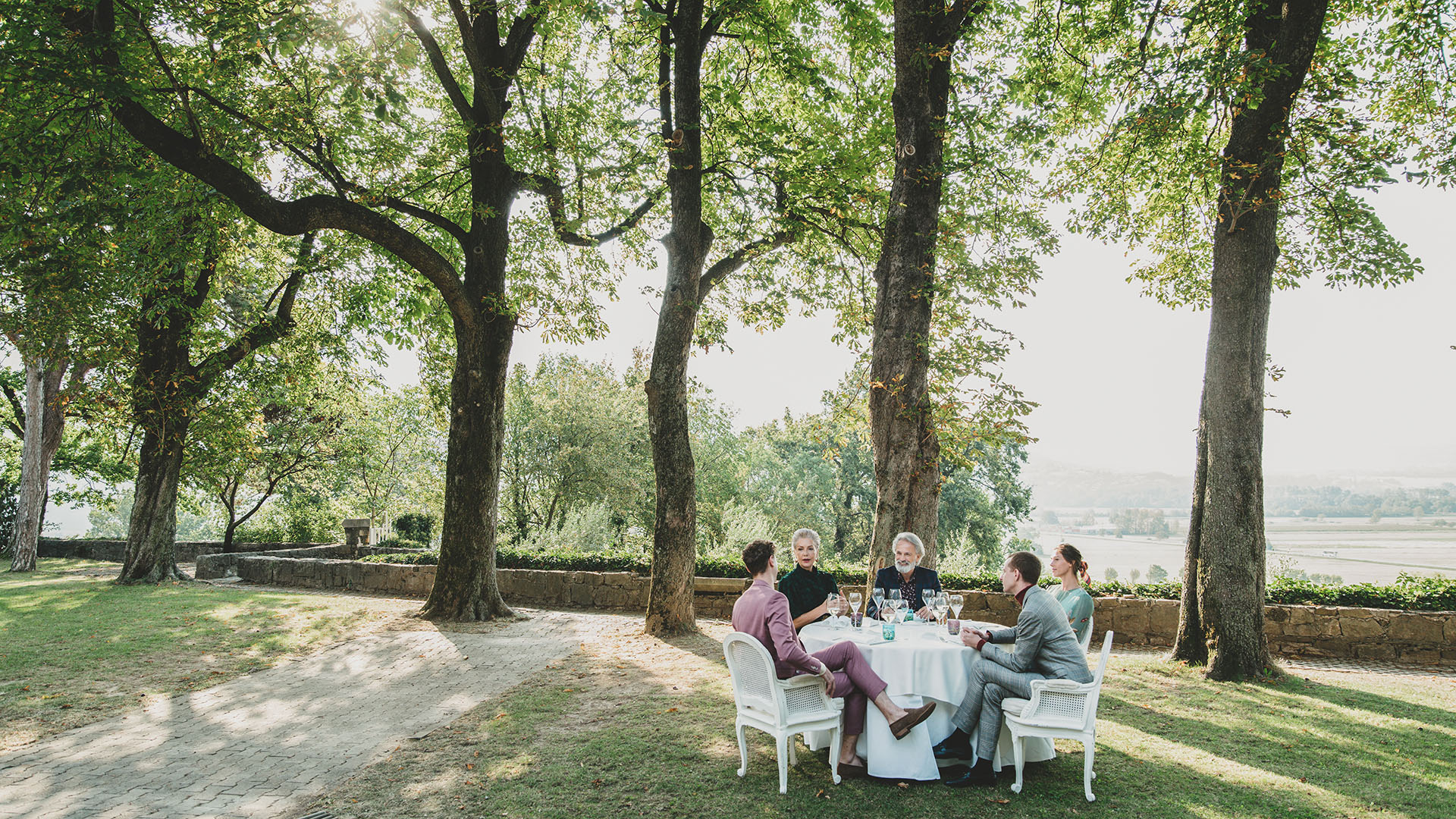
Slow travel, lasting memories
Why Slovenia's gastronomy and culture needs to be savored
Travel to Slovenia goes far beyond sightseeing. With an impressive array of climates, architectural influences, and culinary diversity, visiting Slovenia means experiencing the full gamut of rich flavors, scents, and sensations.
Slovenia is best enjoyed slowly. Taking the time to enjoy your first bite of a traditional dish, or the sight of iconic landscapes bathed in a sunset glow can leave these moments indelibly imprinted on your senses. Slow down and you might create your most vivid memories.
Unhurried, authentic experiences stay true to the essence of a nation that knows how to enjoy the good things in life. Food is farm-to-table. Cities are punctuated with calm green spaces. Culture remains grounded in tradition.
Discover all of Slovenia’s regions to truly relish what this country has to offer.
Slovenia’s four regions
Slovenia is the only country in Europe to sit at the confluence of the Alps, Mediterranean, Karst region, and the Pannonian Plain.
This unique geography translates into a range of microclimates and a bounty of homegrown produce. Slovenes have a passion for provenance and take pride in sourcing fresh local ingredients. Honey is harvested from alpine flower fields, sea salt collected from Adriatic saltpans, and oil extracted from pumpkin seeds grown in the generous sunshine of the Pannonian Plain.
The true extent of Slovenia’s regional diversity is evident in the number of traditional dishes – as many as 400 – and range of dining experiences on offer. You can just as easily feast in a Michelin-starred restaurant as savor the simple pleasure of sun-warmed stone fruit plucked straight from the tree.
Whatever your tastes, three wine-growing regions produce excellent vintages to accompany your meal. Citrus, floral, and fruity aromas will bring to mind the lush landscapes from where the grapes are harvested.
Geographical diversity also means that striking out in any direction will lead you to a different cultural or natural wonder. Spread across the four regions are nine UNESCO sites, ranging from vast subterranean caverns to the sublime urban architecture of Jože Plečnik in Ljubljana.
Thermal Pannonian Slovenia
Slovenia’s easternmost region is famous for its vineyard-covered hills.
In the center of Maribor, the region’s largest city, grows the oldest grapevine in the world to still bear fruit. The 450-year-old vine is an enduring symbol of Slovenia’s wine-making history and traditions.
A cycle tour through the surrounding vineyards is an opportunity to get closer to the terroir, with gentle breezes carrying the perfume of loamy soils and sweet grapes through rows of vines.
Local wines pair beautifully with dishes such bograc, an aromatic meat stew traditionally simmered in cauldrons with spices and wine, or the decadent layer cake prekmurska gibanica which combines the sweetness of apples with earthy walnuts, and poppy seeds.
Another highlight of Thermal Pannonian Slovenia is Ptuj, Slovenia’s oldest town. Between the castle and the cobblestoned streets, it has atmosphere in spades. Long-held traditions are most visible during the spectacular Kurentovanje festival, a popular carnival celebration that floods Ptuj’s streets in February.

Alpine Slovenia
Slovenia’s Julian Alps are improbably pretty. In the clear mountain light, the church spires and 18th-century architecture of alpine towns are vivid against the rocky backdrop of the mountains. The crisp air carries the fresh scent of conifers and the occasional sounds of church or cow bells.
As if the setting itself isn’t striking enough, towns in this region have stand-out features. Medieval Radovljica has its very own moat that encircles streets lined with museums and galleries. Nearby Kranj has a river canyon in the town center.
There are Michelin-starred restaurants in the region – Hiša Linhart, Milka, and Hiša Franko – and many homely gostilna, or inns. Expect inspiration taken from the alps, with menus featuring foraged delicacies like pungent wild garlic and mushrooms, alongside piquant sheep’s cheese and trout pulled from crystal-clear rivers.

Central Slovenia
Colorful Ljubljana is the heart of Slovenia. The capital is in the center of the country – from here it’s only a two-hour drive to even the remotest corners of the country.
The city itself strikes a balance between languid calm and lively energy. Superb urban design elements like graceful bridges and a pedestrianized riverside make strolling around the historic town center a blissful affair. Cafes and restaurants along the river have open-air seating and a convivial atmosphere, while ample green spaces like the elegant Tivoli Park provide a quieter place to promenade.
From early spring to late autumn, the Open Kitchen serves up gourmet market food in an attractive central square. Tantalizing smells wafting from the rows of food stalls will entice you on a mouth-watering exploration of Slovenian and international cuisine.

The Mediterranean & Karst Slovenia
Slovenia’s coastline is modest in length but grand in what it can offer. In the seaside towns of Koper and Piran, picturesque red roofs contrast brightly with the deep blue Adriatic. Venetian Gothic architecture hints at the Italian influences in the area – listen closely and you might hear snippets of Italian being spoken.
Istrian cuisine draws on distinct regional flavors, from the briny tang of Karst prosciutto cured with coarse sea salt to tender, buttery filets of Piran sea bass, and the peppery bitterness of cold-pressed olive oil.
Further inland, you can enjoy wine tasting in the Vipava Valley located between Ljubljana and the coast.
Or, swap sunshine for the sensation of cool air on your skin in the Škocjan Caves. A UNESCO world heritage site, the cathedral-like caves have soaring ceilings and spaces filled with calm silence.
Slovenia is a diverse country with a wealth of locations to immerse yourself in. With no two regions alike, there’s always something new to experience.

Further afield, it’s worth visiting winegrowers in Slovenian Istria and Goriška Brda, Karst and the Vipavska areas as well as the Dobrovo castle cellar.
Walking Koper’s old town reveals medieval streets full of awe-inspiring architecture, from 12th century rotundas to 15th century reveals Venetian-style gothic palaces. Just east of the city center – the Škocjanski Zatok Nature Reserve. Here, the Karst Edge, where the continental Slovenia meets the coast, you’ll have the chance to take in the sights of Slovenia’s sub-Mediterranean landscape and dabble in something more adventurous, since the area is world-famous for rock climbing.







